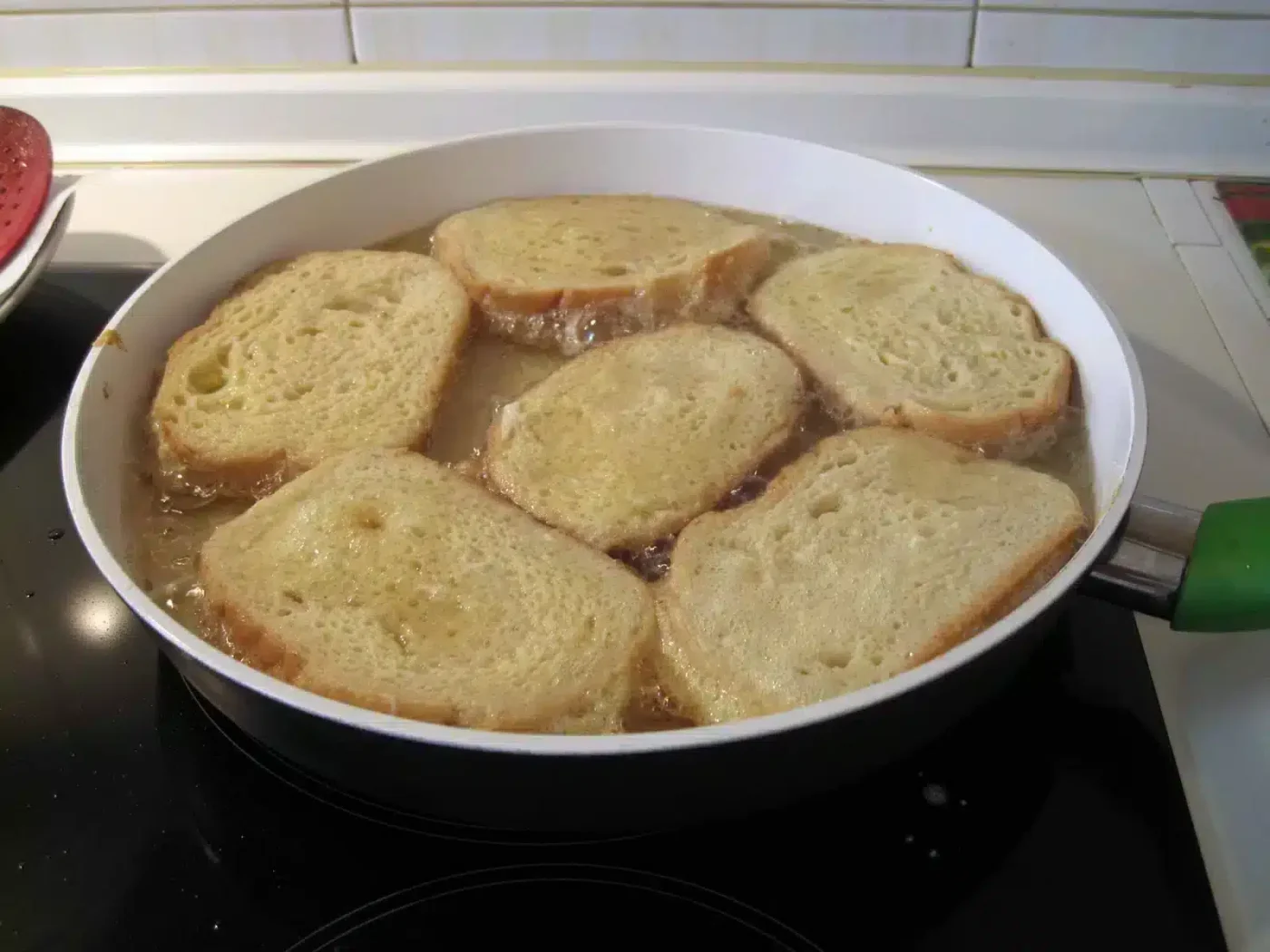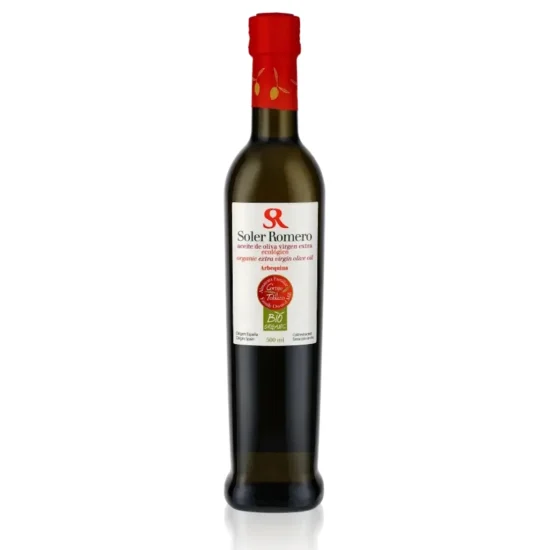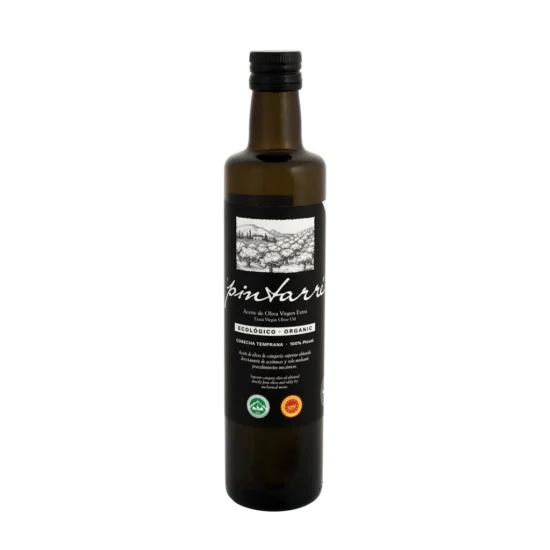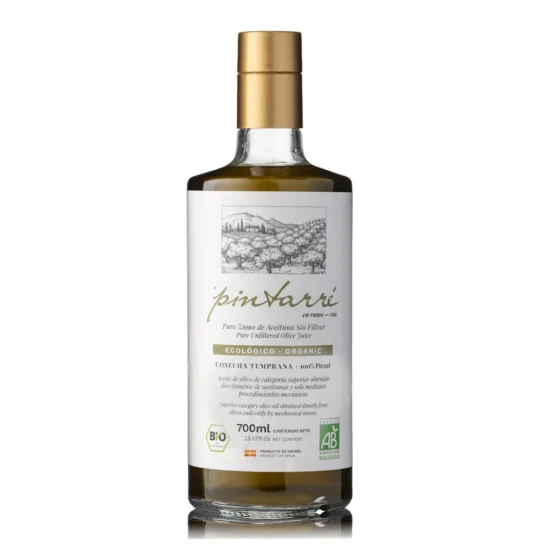
Holy Week means a time for small sweet and fried food excesses! But we must try to have good ingredients and, above all, control the oil well when frying torrijas. However, the decision of which oil to use will depend on our tastes, availability, and even our budgets.
Torrijas are, without a doubt, the star dessert of the Lent and Holy Week season in Spanish gastronomy. They are prepared and eaten throughout the country, in restaurants, bakeries, and homes. But contrary to what it may seem, making a good torrija is not easy. Furthermore, the variety of torrija recipes is wide: made with wine, milk, or syrup, coated in sugar and cinnamon, fried, baked, stuffed, and much more.
Extra virgin olive oil, refined olive oil, pomace oil, sunflower oil… The variety of vegetable oils is vast, and we need to be clear about a few factors. This way, we’ll assess cost, durability, flavor, and smoke point, all key factors for frying torrijas.
The key is to analyze the various pros and cons. As with other types of frying, although some oil gurus recommend EVOO for any type of frying, we know that this maxim isn’t followed in all homes. In any case, let’s analyze the advantages and disadvantages in terms of price, flavor, and smoke point.
Generally, when making torrijas, we prefer more neutral oils or flatter flavors that don’t overpower. Olive oil is the most traditional and popular choice for frying torrijas due to its flavor and the way it adds a special touch to the dish. Additionally, extra virgin olive oil, with its distinctive taste, can enhance the flavor profile of torrijas.
On the other hand, sunflower oil is a more neutral option in terms of flavor, so torrijas would have a less distinctive taste compared to those fried in olive oil. However, sunflower oil tends to be more economical and has a higher smoke point, meaning it can withstand higher temperatures without burning, which can be helpful if you’re concerned about temperature control during frying.
Except for certain palates, the purchasing decision is also guided by price, and even if it is occasional, frying requires a large amount of oil:
The smoke point is not It’s especially important for making torrijas because it’s a product that fries relatively quickly. For this reason, it’s not essential to bring the oil to the point of almost burning:
To check if the oil has reached the right temperature, if you don’t have a cooking thermometer, drop an orange peel into the oil. When it sizzles, we can add the torrijas, keeping the heat at medium and turning them over so they fry on both sides.
The oil must be very hot (as with all frying), and in the case of sunflower oil, which is less stable than olive oil, more care must be taken because it does not tolerate high temperatures well. However, you should always discard the oil after frying a certain number of torrijas, approximately 16-18 pieces, and keep it clean.
It only takes two minutes to fry each torrija (one minute per side), but it’s important to add them at most two at a time so the oil doesn’t cool down. We also emphasize that the oil must be fresh so that it is free of flavors and better withstands the frying of our torrijas.
In short, frying torrijas in olive oil will provide a more distinctive and authentic flavor, while sunflower oil offers a more neutral and economical option with a higher smoke point. The final choice depends on your preferred flavor and your considerations regarding frying temperature and budget.
Serve these Mediterranean torrijas warm or cold. The contrast of the softness of the soaked bread, the citrusy note of the orange, the crunch of the pistachios, and the aroma of the olive oil will make them an unforgettable dessert. Enjoy!
Important Note: aceitedelcampo.com promotes the consumption of extra virgin olive oil for its culinary qualities and health benefits. However, no medication or current treatment should be replaced without the guidance of a healthcare professional.




ALZAYT EXPORT SL
info@aceitedelcampo.com
C/ Eduardo Bosca 19, 2-5
46023 Valencia
Subscribe and receive a coupon by email for your next purchase.